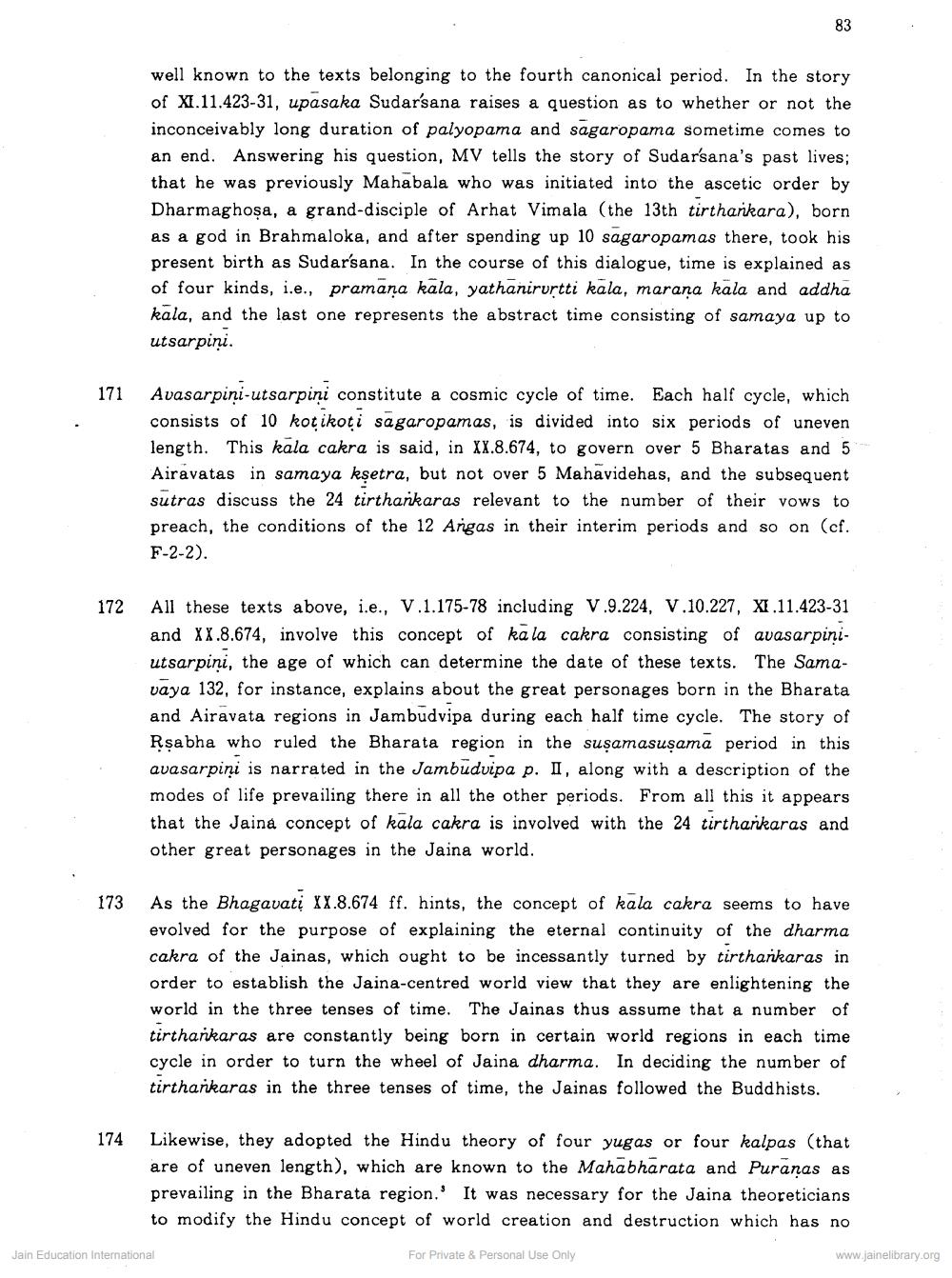________________
83
well known to the texts belonging to the fourth canonical period. In the story of XI.11.423-31, upasaka Sudarsana raises a question as to whether or not the inconceivably long duration of palyopama and sagaropama sometime comes to an end. Answering his question, MV tells the story of Sudarsana's past lives; that he was previously Mahabala who was initiated into the ascetic order by Dharmaghoşa, a grand-disciple of Arhat Vimala (the 13th tirthankara), born as a god in Brahmaloka, and after spending up 10 sagaropamas there, took his present birth as Sudarsana. In the course of this dialogue, time is explained as of four kinds, i.e., pramana kala, yathanirurtti kala, marana kala and addha kala, and the last one represents the abstract time consisting of samaya up to utsarpiņi.
171
Avasarpiņi-utsarpiņi constitute a cosmic cycle of time. Each half cycle, which consists of 10 kotikoti sagaropamas, is divided into six periods of uneven length. This kala cakra is said, in XX.8.674, to govern over 5 Bharatas and 5 Airavatas in samaya kşetra, but not over 5 Mahavidehas, and the subsequent sutras discuss the 24 tirthankaras relevant to the number of their vows to preach, the conditions of the 12 Angas in their interim periods and so on (cf. F-2-2).
172
All these texts above, i.e., V.1.175-78 including V.9.224, V.10.227, XI.11.423-31 and XX.8.674, involve this concept of kala cakra consisting of avasarpiniutsarpini, the age of which can determine the date of these texts. The Samavaya 132, for instance, explains about the great personages born in the Bharata and Airavata regions in Jambudvipa during each half time cycle. The story of Rşabha who ruled the Bharata region in the susamasusama period in this avasarpiņi is narrated in the Jambudvipa p. II, along with a description of the modes of life prevailing there in all the other periods. From all this it appears that the Jaina concept of kala cakra is involved with the 24 tirtharkaras and other great personages in the Jaina world.
173
As the Bhagavatį XX.8.674 ff. hints, the concept of kala cakra seems to have evolved for the purpose of explaining the eternal continuity of the dharma cakra of the Jainas, which ought to be incessantly turned by tirthařkaras in order to establish the Jaina-centred world view that they are enlightening the world in the three tenses of time. The Jainas thus assume that a number of tirthankaras are constantly being born in certain world regions in each time cycle in order to turn the wheel of Jaina dharma. In deciding the number of tirtharkaras in the three tenses of time, the Jainas followed the Buddhists.
174
Likewise, they adopted the Hindu theory of four yugas or four kalpas (that are of uneven length), which are known to the Mahābhārata and Puranas as prevailing in the Bharata region. It was necessary for the Jaina theoreticians to modify the Hindu concept of world creation and destruction which has no
Jain Education International
For Private & Personal Use Only
www.jainelibrary.org




